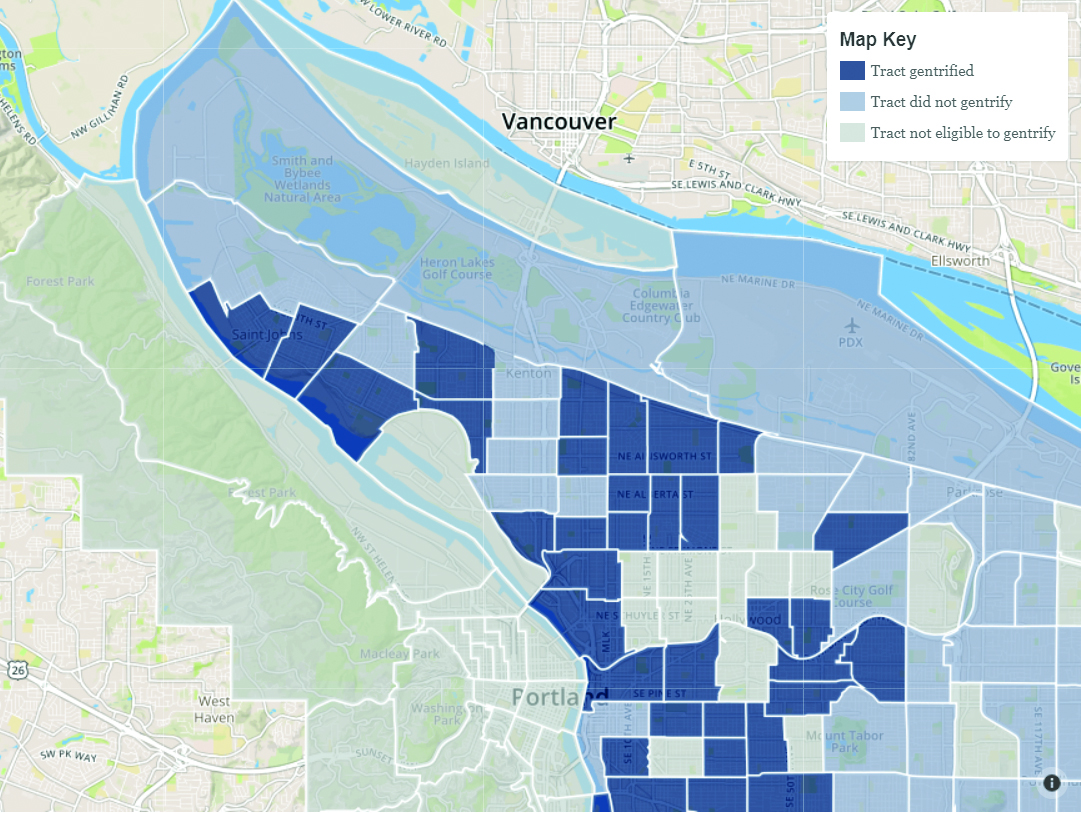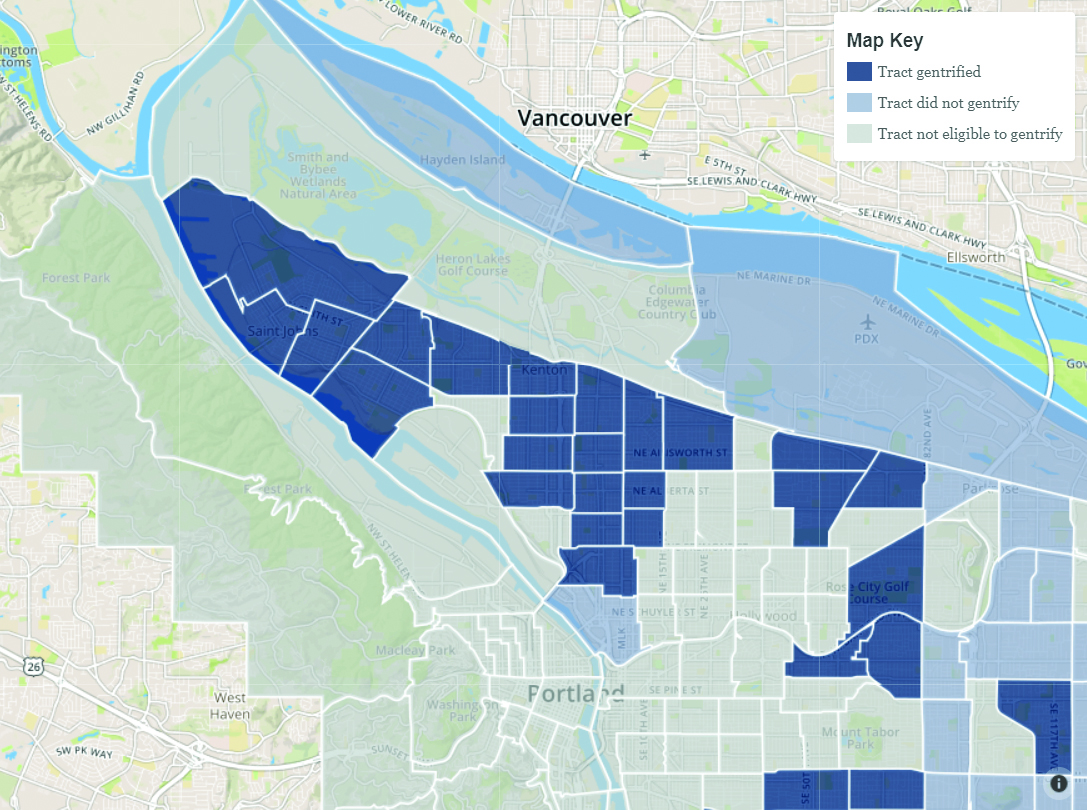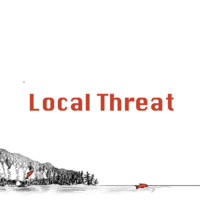The ground breaks under each step. Dried roots and berries lie lifeless along the steep terrain. Over time, the snowpack depletes, and the rain loses its familiarity. The changes, at first, were gradual: warmer air, a slightly longer summer season. But now the roots are running, climbing up the hills and farther out of reach.
For the Native population in Pendleton, Ore., climate change has proven especially pervasive in the traditions and daily life of the community. As temperatures in the Pacific Northwest have risen an average of over two degrees since 1900, Native communities in Pendleton have seen roots and huckleberries—staples for growing and gathering—move into higher elevations as droughts and decreased snow cover make the ground at lower elevations unsuitably dry. While the crops continue to push higher, this keystone element of Pendleton’s Native community is becoming increasingly scarce.
Oregon in the Climate Crisis

As temperatures and carbon dioxide emissions increase around the world, the state of Oregon and the Portland metropolitan area are just as susceptible to extensive environmental damage.
In 2015, the Portland Water Bureau (PWB) released a thorough report expressing concern over water quality in Oregon reservoirs. According to the PWB, the rising temperatures are likely to increase water accumulation in the atmosphere, which would heighten both the amount and duration of rainfall in the Portland area. As the rainfall increases, sediment around the Bull Run water reservoir—Portland’s most abundant water supply—could pollute the water and shut down the supply for the entire city for more extended periods.
Although environmental dangers like the one at Bull Run pose a significant threat for all Oregonians, Native communities more directly experience the detriments of water and resource depletion due to their relationship with water. The Columbia Plateau tribes hold a ceremony to commemorate the Creation story and the reciprocal relationship between humans and nature. “Because (Native communities) are the most climate-sensitive community, the water is first and foremost our priority,” says Aja Decoteau, the Watershed Department Manager of the Columbia River Inter-Tribal Fish Commission.
“Indigenous people are what they call frontline communities, who are impacted the most, because of our reliance on natural resources, particularly fish and wildlife and water, land resources (that) many of us have subsistence lifestyles based upon,” says Don Sampson, the Climate Change Project Coordinator for the Affiliated Tribes of Northwest Indians.
In Portland, these disproportionate impacts are not happening by chance.
“It can seem, at first glance, if one isn’t paying attention to historical processes, that it just sort of happens; that people with less economic power happen to live in areas where housing is cheaper, in places with fewer amenities, and that places with fewer amenities are also places where people are exposed to higher levels of toxins,” says Dr. Ellen Stroud, associate professor of history at Pennsylvania State University and author of a 1999 study that highlights increasing environmental racism in Portland. “But it always seems to be people who look a certain way or don’t look a certain way, or who share certain histories, who are always just ‘happening’ to be at higher risk … with those (phenomena), those correlations, we need to look deeper at the history and at how those things happen.”
Although Portland is considered to be one of the most progressive cities in the U.S. with regards to climate change, it also lacks considerable racial and ethnic diversity. Since the majority white population in Portland is not as vulnerable to the impacts of climate change, there is often insufficient recognition of the disproportionate effects between different racial groups. “I think I’ve seen an increased presence of white people in a lot of these environmental justice movements (in Portland), but not seeing them at any other movements or thinking about the intersection of the environment and race and where that racism connects,” says Madison High School senior Faisal Osman.
The Columbia Slough

In 1940, Portland was in the middle of an economic and population boom. North Portland was industrializing rapidly, and the waste from lumber mills and stockyards was dumped in the Columbia River Slough. According to Stroud, “The sewers are only a part of the problem. Every time it rains, the raw sewage that flows into the slough is joined by polluted groundwater, industrial wastes, chemicals from the Portland Airport, and toxins leaching from the St. John’s Landfill.”
Plans were made in the 1950s and 1960s for urban growth boundaries to limit sprawl in Portland by prioritizing development near transportation corridors and allowing new industries to establish in blight zones. According to Portland Monthly, the median home value in the Columbia Slough decreased by 10 percent in 2015 due to the environmental impacts of development.
In 1963, the Oregon legislature passed Senate Bill 10, and in 1973, it was accompanied by a follow-up, Senate Bill 100. Both were meant to regulate where industry can be located, as well as other land uses, which enforced earlier plans at the state and local level. “The case of the Columbia Slough and the neighborhoods of the North Portland Peninsula provide an example of how land-use regulations affected different groups of people in different ways. At the slough, it is clear that land-use regulations worked against the working-class and minority peoples who lived there. At a time when much of the state was being cleaned up, the Columbia Slough stagnated,” says Stroud.
In 1998, the Clinton administration designated the Willamette River as an American Heritage River, allocating special treatment to the Willamette to encourage its cleanup and revitalization. Despite this effort, the river has been classified as a Superfund site since 2000, described by the Environmental Protection Agency (EPA) as “some of the nation’s most contaminated land.” According to the Eugene Register-Guard, the cleanup costs total over $1 billion. The bill has been assigned to over 100 parties, all of which shared a portion of the responsibility for the toxic pollution which flows through the river.
The most affected area of the river is a 10-mile stretch from the Broadway Bridge to the Columbia Slough. According to Black Past, in 1990, nearly 80 percent of Black residents in Portland lived in this North or Northeast Portland area. At the time, 15 percent of the population of the entire city were racial minorities. These residents were consistently near a toxic river, endangering their health due to the high concentration of polyfluoroalkyl substances (PFAS) found in the Columbia River in 2017.
The PFAS, which are used in foam suppressants to put out fires, can be correlated to a variety of health problems, including cancer and liver damage. These chemicals were traced back to a training facility for the Portland Fire and Rescue Bureau, located within the borders of the Columbia South Shore Well Field. Portland extracts part of its water supply from the well field during drier months and emergencies.
Although the Groundwater Protection Program—the City of Portland’s monitoring program for PFAS—was implemented in 2015, the effects of industry still take a toll on the restoration process as storms wash away pollutants from nearby landfills and into the Columbia Slough and near the Albina area.
Uranium
The Navajo people, based in the Southwestern U.S., have dealt with the impacts of insufficient support by the federal government for decades. According to NPR, between 1944 and 1986, mining companies used Navajo land to mine for uranium within the earth. The government encouraged the mining so they could use the uranium to build nuclear weapons during the Cold War—weapons that were never used. Once these companies exhausted the extraction of the mines, they left without cleaning the leftover uranium or containing it from the surrounding environment.
The Navajo people were exposed to this uranium daily, as it had infiltrated their water, one of the foundational parts of their lives. A recent study by the Southwest Research and Information Center found that the Navajo people had uranium levels five times as high as the rest of the country. Exposure to uranium and its accumulation in the body can cause several health risks, with the most common illness being kidney failure.
The impacts of the chemical exposure remain today; a 2018 study showed that 26 percent of Navajo women still have high levels of uranium in their systems. According to The Journal, the EPA decided in October 2017 to give a contract to evaluate the pollution of 30 abandoned uranium mines on the reservation to Tetra Tech Inc. The controversy surrounding this selection stems from a report done a month prior by the U.S. Navy.
The report says that Tetra Tech EC, the subsidiary of Tetra Tech, Inc. that is responsible for the evaluation, was influencing the data from a previous nuclear site to make it appear ready for building. This evaluation was done through the collection of soil samples solely from the “clean” parts of the site and was used to represent the overall quality of the area—including contaminated sections. In reality, the site was not properly cleaned for usage. Development on the site had the potential to cause exposure to radioactive material for anyone building on or inhabiting the area.
Radiation from uranium mining can accumulate in groundwater sources, soil and animals. “We have a high cancer rate within the tribes and we can’t attribute that to anything. We’re the people eating the most from the land and eating the deer and elk and the fish. So, it really makes you wonder because we’re so dependent on these natural resources and if it made us sick,” says Aja Decoteau, the Watershed Department Manager of the CRITFC.
Recently, the Navajo Nation settled with Kerr-McGee, a mining company with uranium mines on the Navajo land. The parent company of Kerr-McGee, Anadarko Petroleum Company, agreed to pay the Navajo people $1 billion for cleanup, as well as compensation. However, the federal government only allocated $85 million to the cleanup, despite the status of the area as a Superfund site. That money was devoted exclusively to Tetra Tech EC.
According to Stroud, however, there is not sufficient government funding to adequately address environmental issues like uranium pollution in indigenous communities. “Part of the problem is that there is only so much money that we can spend on policy,” says Stroud. “I want to say that we should figure out how to fund everything, but funding everything isn’t actually possible.”
Instead, she believes that the solution to the issue of environmental racism lies in education and youth-driven change. “And I’m hopeful that solutions will be forthcoming. But it will be … students thinking about these things in complicated and connected ways, things that will make a difference.”




